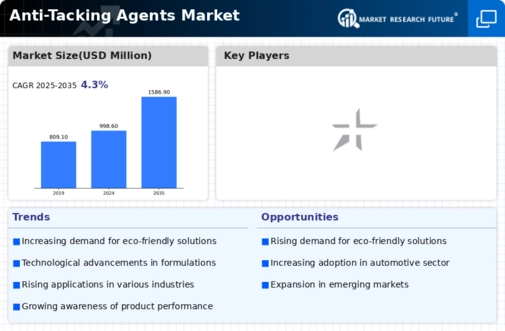Top Industry Leaders in the Anti tacking Agents Market

In the bustling world of materials, anti-tacking agents play a crucial role, preventing unwanted sticking and clumping across diverse industries. From keeping fertilizers free-flowing to ensuring smooth rubber surfaces, these invisible allies drive a global market expected to explore strategies, factors, and developments shaping this dynamic terrain.
Strategies Keeping the Flow Going:
-
Product Diversification: Leading players like Wacker Chemie and Evonik are developing specialized anti-tacking agents for specific applications, like lubricants for tire production or silicone-based solutions for food packaging. This caters to niche needs and expands market reach. -
Sustainability Focus: Green awareness is gaining traction. Companies like Arkema are investing in bio-based anti-tacking agents derived from renewable resources, minimizing reliance on fossil fuels and aligning with eco-conscious customers. -
Technological Innovation: R&D efforts are key. Companies like BYK are pushing boundaries with novel anti-tacking agents with improved efficiency, lower dust generation, and enhanced compatibility with various materials. -
Regional Expansion: Asia-Pacific, with its booming construction and manufacturing sectors, presents fertile ground. Companies like Dow Chemical are setting up production facilities in this region to capitalize on local demand. -
Strategic Alliances: Collaboration fuels growth. For instance, Lanxess partnered with a leading fertilizer manufacturer to develop customized anti-caking solutions for specific fertilizer blends.
Factors Dictating Market Share:
-
Performance Prowess: Superior anti-tacking efficacy, dust control, and compatibility with different materials are crucial selling points. Established brands like BASF have built reputations for consistent performance, attracting loyal customers. -
Cost-Effectiveness: Price remains a critical factor, particularly in mature markets. Chinese manufacturers often offer lower prices, challenging established players to optimize production and pricing strategies while maintaining quality. -
Regulatory Landscape: Stringent regulations on food safety and health hazards dictate market trends. Players who comply with these regulations, like Clariant with its dust-free anti-tacking agents, gain a competitive edge. -
Application Diversity: Catering to diverse industries offers resilience. Companies with broad product portfolios like Albemarle benefit from diversification, mitigating risks in saturated segments.
Key Players:
- Lion Specialty Chemicals Co., Ltd (Japan)
- Schill + Seilacher "Struktol" GmbH (Germany)
- Baerlocher GmbH (Germany)
- Polmann India Ltd. (India)
- FERRO-PLAST S.r.l. (Italy)
- Hallstar (US)
- Chem‑Trend L.P. (US)
- McGee Industries, Inc. (US)
- Hans W. Barbe Chemische Erzeugnisse GmbH (Germany)
- Arsenal Capital Partners (US)
Recent Developments:
-
August 2023: BASF SE launched a new line of bio-based anti-tacking agents for waterborne coatings, further pushing sustainability efforts. -
October 2023: Dow Chemical Company introduced a new anti-tacking agent specifically designed for high-performance automotive coatings, improving scratch resistance and durability. -
November 2023: Lanxess AG received regulatory approval for a novel nano-based anti-tacking agent for food packaging, minimizing potential migration of chemicals into food products. -
December 2023: The US Environmental Protection Agency proposed new regulations on certain chemicals used in anti-tacking agents, potentially impacting future product formulations.

